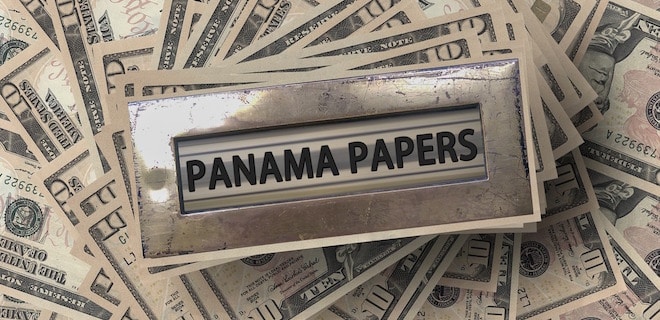Even if you’ve been hiding under a rock for the past month, you’ve likely heard of the Panama Papers. Investigators from the International Consortium of Investigative Journalists (ICIJ) released information obtained from a breach at a Panamanian law firm that sells shell companies globally. We analyzed the coverage over the past month with Meltwater, and found that the Panama Papers have been discussed in over 70,000 news hits. While the magnitude of this news lends itself to a lot of coverage, I think there’s something else at work here. As PR pros we should take a moment to appreciate the phenomenal approach the ICIJ took to the release of information within the leaked files.
While it might seem like news of this caliber will make waves no matter what, I’d like to argue the Panama Papers news was highly covered due to the stellar approach the ICIJ took in their launch day activities and beyond. We launch news and products every day and we encourage clients to include media, data, visuals and work under an embargo. While we don’t always get all of these components due to a range of factors, the Panama Papers is proof it works! Here are five key components the ICIJ used in their launch day toolkit that can and should be replicated:
(1) Data
While knowledge of the breach came to the Süddeutsche Zeitung (SZ) and the ICIJ over a year ago, the official announcement didn’t happen until April 2016. They did their due diligence and took their time analyzing the information within these papers and identifying meaningful data.
If you’ve been following our blog, you know data matters. It can make a real difference in getting a journalist’s attention and standing out in a news article. The ICIJ invested valuable effort analyzing over 11.5 million internal files, accumulated over nearly 50 years. ICIJ turned that data into powerful soundbites that took over headlines.
(2) Data visualization
Data is important, and can turn an average story into one that spreads like wildfire. ICIJ took it one step further, using data visualization to tell the story for them. Today’s newsroom is busier than ever, and journalists don’t have time to build the right data visualization that make a great, highly read story. Below is just a sample of the data they analyzed and made stunningly interesting:
(3) Pre-packaged media for all outlets
Data is key for any launch strategy, but we also recommend layering several assets. One of our favorites is video, but images, soundbites and visualizations are helpful as well. If you were paying attention on April 4, you would’ve notice high-quality video in news articles as well as broadcast.
Those assets were distributed right along with the information about the breach. An announcement shouldn’t just come from a press release, but it should come with data, visualizations, video, and any other media asset that will enhance the story or message.
(4) Tightly controlled embargo
As you know by now, the Monsack Fonseca breach occurred much earlier than the day news broke in April 2016. The ICIJ and over 100 other news organizations worked quietly and in secret for over a year analyzing and creating material to break the news and not a peep leaked out beforehand. While an embargo isn’t always necessary, the Panama Papers news is a perfect example of what can happen with an organized and tightly controlled message launches with an embargo.
(5) Share-ready materials
The ICIJ had data, visualizations, wonderfully produced media and more. The icing on the cake? It made sure its assets were in the right shape to be shared by the masses. By including embed codes in the data visualizations, choosing media that shares nicely across social and CMS platforms (like the youtube video and charts above), and a laser-like focus on shareability guaranteed that this news had the highest impact. By choosing media formats that make it easy for anyone (not just a newsroom) to share, it has a megaphone effect on the distance news can spread.

